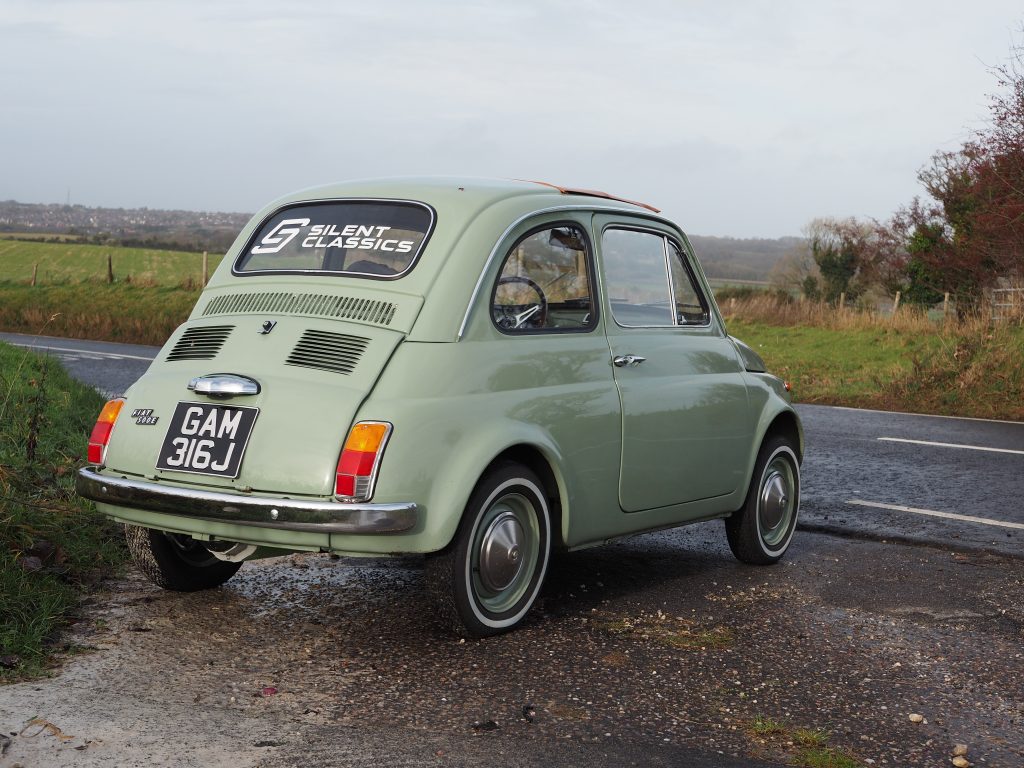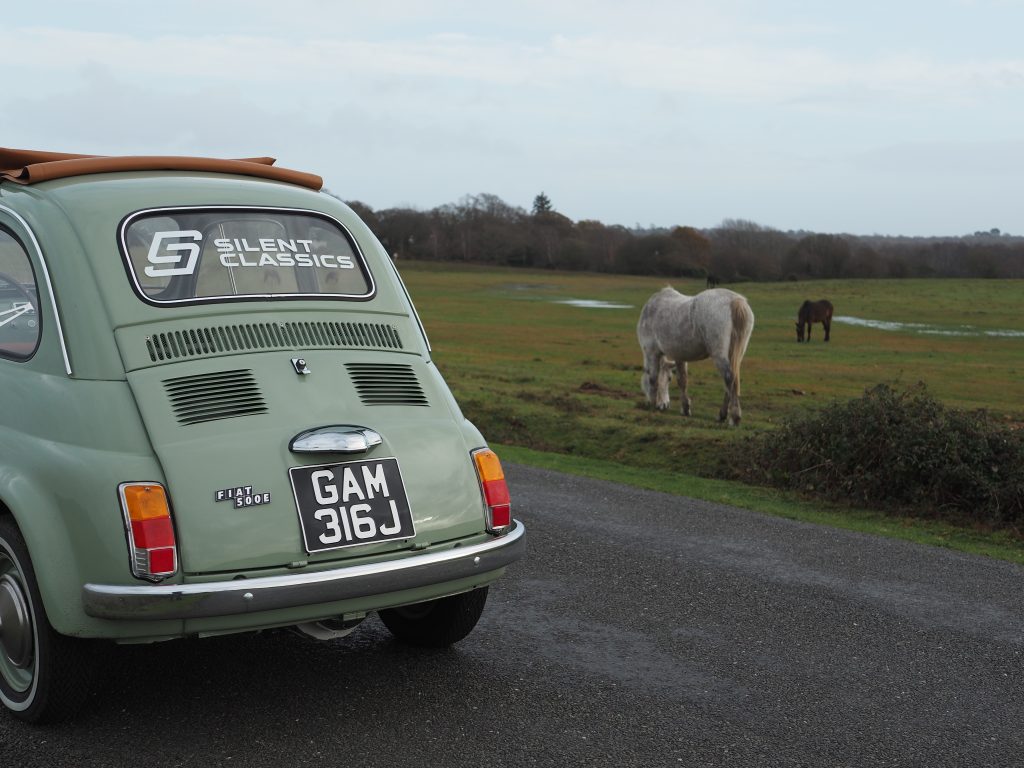The electrification of classic cars is a thorny subject. One person’s future-proofing is another’s history-bashing.
For now, nobody is forcing anyone else to abandon internal combustion to keep their old cars on the road. Electrifying a classic is a question of choice, but it does seem that more and more people are making that choice.

In 2023 alone I’ve driven an electrified E-Type, Porsche 911 and MGB, adding to a Land Rover Series IIA, Porsche 356 (and a different 911 and MGB) the year before. My colleagues have tried Minis and Mustangs, too, and here I am again about to silently take to the road in another classic.
Appropriately enough, the builder is named Silent Classics, founded by Jack Kerridge six years ago in Shaftsbury, Dorset. Kerridge grew up working on cars in his father’s shop and spent time at an engineering firm before setting up on his own, initially with restorations, before switching to electrification.
In the workshop are a Bentley S2, a Range Rover Classic, a Jaguar SS saloon, and even a three-wheeled Bond Bug. “We do lots of weird and wonderful cars,” says Kerridge. “But I’m trying to focus on the Fiat 500.”
Having completed ten conversions to date, Silent Classics has developed a drop-in kit that takes a decently skilled mechanic around a week to install. Supply a car and Kerridge’s team will do the work for you for about £33,000, or you can purchase the kit for £24,000.
Plans are in place for a full 500 resto-mod with an updated leather interior, electric windows, central locking, air conditioning, and Apple Car Play/Android Auto, but today the tiny car that awaits me is pretty close to factory condition.


You’d certainly never tell it was electric from the outside without the help of the large logo on the rear window. The charging point is neatly tucked away behind the badge on the front, so it’s really just the lack of a pea-shooter tailpipe that gives the game away.
The update is more obvious from the inside, with a circular digital instrument panel and modern aluminum buttons for the heating and regenerative braking. The clutch pedal is gone, but the standard handbrake and gearshift remain – although it now only moves back and forth to select forward or reverse.


Under the bonnet sits the main battery pack, while in the rear, where the engine used to be, are the motor, control systems, and some more cells. In total there’s 21 kWh of capacity to drive a 44-kW (59 bhp) electric motor. The 500’s original gearbox and differential are retained, but it’s locked into top gear. The whole setup adds around 80 kg to the car’s weight and distributes most of that over the front axle. Silent Classics fits slightly stiffer springs to compensate, but having more than twice the original 500 cc two-cylinder motor’s power output mitigates the extra mass.
The 500 manages to be minute, yet also strangely spacious inside. It’s the expansive glass, thin pillars, and wide-opening sunroof that make it feel airy, despite the driving position being quite cramped. The wheel arch of this left-hand-drive 1970 model intrudes so much that my left foot has to be squeezed in at an odd angle, while my right leg can’t be extended either. How there was ever room for a clutch pedal here is beyond me. The driving position is a classic Italian, long arms-short-legs arrangement, and certainly not ideal for long distances.


Silent Classics says they’ve managed 120 miles on a full charge in the summer months, so, on a chilly but bright winter’s morning, my 94-mile planned trip might be pushing it.
I’m wrapped up warmly to avoid having to use the heater and have the regenerative braking switched on to claw back as much energy as possible on my planned route through the picturesque New Forest.
There are no seatbelts or side mirrors, so I make a cautious start. In fact, a cautious start has seemingly been built into the drivetrain’s behavior, with about half an inch of travel on the accelerator and quite a hefty amount of torque management before anything happens. The initial pickup isn’t the instantaneous oomph offered by most EVs, but once rolling it rapidly winds up and soon whips on to 50 mph. It takes a little getting used to, but the theory is that it protects the transmission.
My route takes me via Zig-Zag Hill, officially Britain’s Bendiest Road, with its very short sequence of hairpins and it takes a couple of turns to figure out that I need to jump on the accelerator mid-bend in order to get power on the exit. The road surface is cold, damp, and strewn with fallen leaves, and there’s just a little squirm from the rear end when I get the timing just right. Enough to prompt a giggle, but no need for any opposite-lockery.
Despite the extra weight on the front end, the steering is light, even at low speed, and, although a bit vague initially, springs to life once you’ve got the car turned in, delivering the kind of feel you only get from skinny tyres and an un-assisted rack (actually, it’s a steering box).
Up and over I go looking down over the Dorset countryside on a rather wonderful undulating stretch of road that gently meanders towards Ringwood and the gateway to the New Forest. Here the trademark miniature ponies wander free and, more than once, I have to test the 500’s brakes. They need a good shove, and the regenerative deceleration isn’t especially strong, but, thankfully, nobody is being sent to the glue factory today.

Overall, it’s a rather lovely drive, and the low 40 mph limit in the forest is never frustrating – as it might be in something bigger and faster. My destination is the National Motor Museum at Beaulieu where I’m led to believe there are some charging points, but despite several laps of the car parks, I fail to find them.
There’s just under 50 per cent left in the battery and 47 miles to go when I begin to retrace my steps. The ups and downs take their toll, though, and by the time I get to Zig Zag Hill again, there’s just nine per cent remaining with six miles still to go and I can feel the power gradually being reduced. The steep drop appears to put a bit of pep back in, and I’m cautiously optimistic about getting back.
However, it’s not to be, by the time I reach Shaftsbury the battery is at seven per cent and the 500 is limping. I manage to crawl into a supermarket car park where there’s a charger.
“That’s the oldest electric car I’ve ever seen,” remarks one shopper. “I didn’t know they made ‘em electric,” adds another.
At least while I wait for a top-up I’m not short of friendly company.













Sorry but the conversion seems a waste of money especially with the advertised range and to electrify an E-type and a 911 , a sacrilege.
Interesting it doesn’t have seatbelts. I thought only pre-1965 cars were exempt?